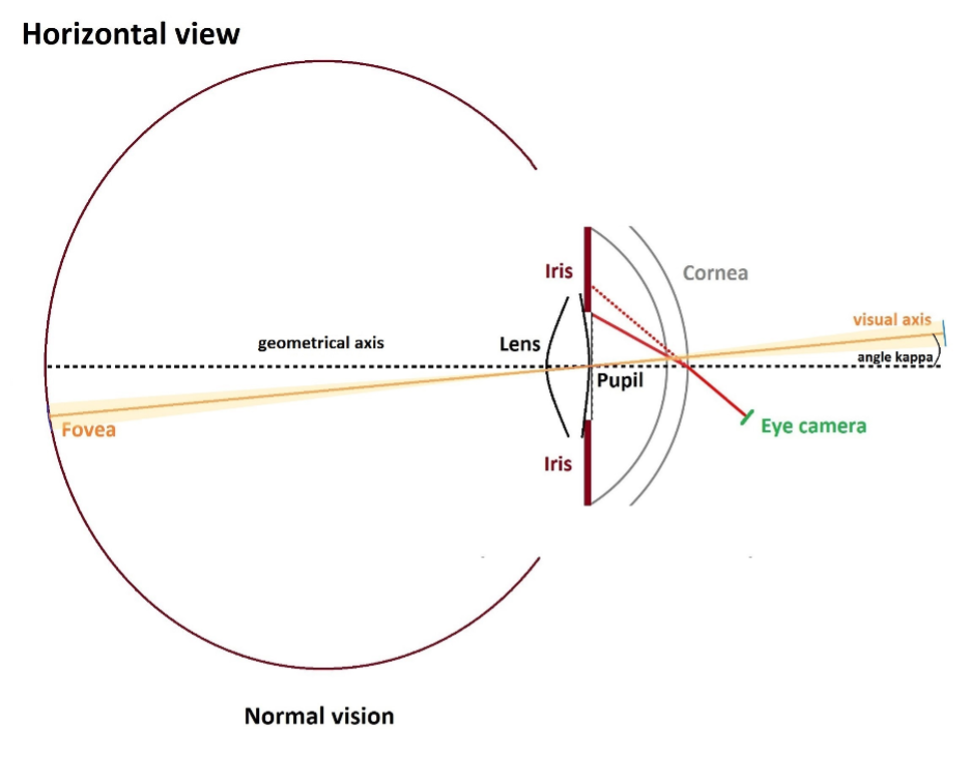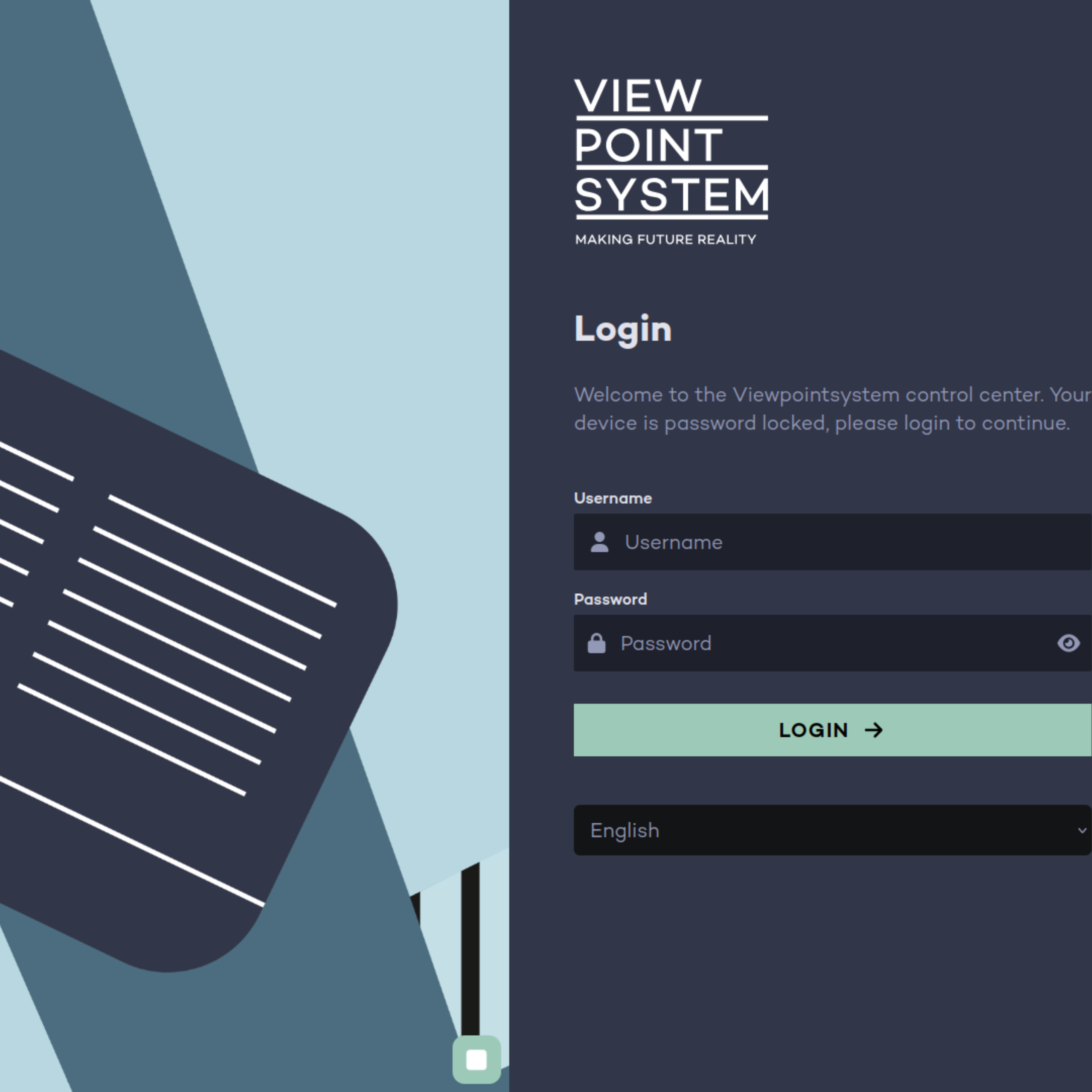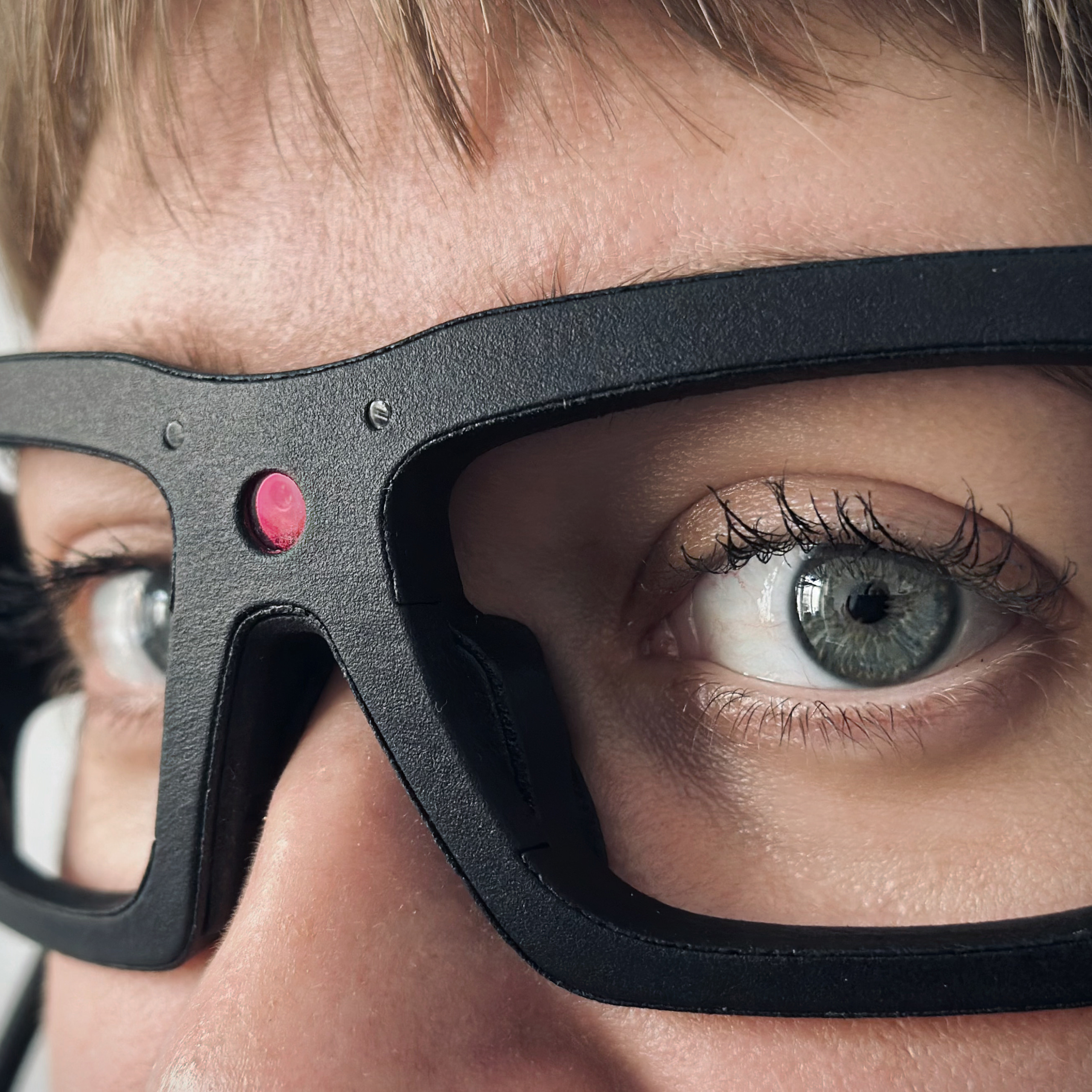
By Alejandro Gloriani
We have developed a “digital twin” of each eyeball to track the 3D geometry of the wearer’s eyes in real time with only one camera per eye. This dynamic 3D model provides binocular gaze- and pupil-tracking data while compensating for glasses slippage and parallactic shifts.
Our digital-twin modeling needs to make certain assumptions about the anatomy of the wearer’s eyeballs, such as the angle κ between the geometrical and visual axes (see Figure 1) or the curvature of the corneas. In the absence of wearer-specific data, we use values for a standard healthy human eye and thus provide an auto-calibrated prediction of the wearer’s gaze. The accuracy of this auto-calibrated gaze is typically around 2° and can be as good as 1°. The psychophysical state of the wearer and their fixation training have a significant influence on the accuracy.

In other words, for most users our VPS 19 glasses work out of the box without any calibration, providing an auto-calibrated gaze accuracy that is good enough for many applications.
For situations that require a personalized calibration, we provide a simple one-point calibration procedure that estimates personalized κ angles for each eyeball and improves the typical gaze accuracy to below 1°. This quick calibration is robust to glasses slippage and it takes only a few seconds to complete. The one-point calibration compensates for certain individual eye deviations, both symmetric individualities (such as myopic and hyperopic deviations), and asymmetric (strabismic, keratoconic) individualities.





